| Natıonal Liberation Army جيش التحرير الوطني الليبي | |
|---|---|
| Active | March 2011–October 2011 |
| Country | |
| Allegiance | National Transitional Council |
| Branch | Army |
| Size | 3,000 (initially) 17,000 (peak) |
| Headquarters | Tripoli |
| Nickname(s) | Free Libyan Army |
| Motto(s) | Free Army, Free Libya! |
| Colors | Red, black and green |
| Engagements | First Libyan Civil War |
| Commanders | |
| Commander-in-Chief | Abdul Fatah Younis (appointed) Khalifa Haftar (self-proclaimed) |
| Defence Minister | Omar al-Hariri (March–May 2011) Jalal al-Digheily (May–October 2011) |
| Notable commanders | Abdul Fatah Younis † Khalifa Haftar |
| Insignia | |
| Identification mark |  |
| Aircraft flown | |
| Fighter | MiG-21, MiG-23 |
| Attack helicopter | Mi-25 |
| Utility helicopter | Mi-14 |
The National Liberation Army (Arabic: جيش التحرير الوطني الليبي jaysh al-taḥrīr al-waṭanī al-lībī), officially the National Liberation Armed Forces of the Free Libyan Republic, formerly known as the Free Libyan Army,[1] was a Libyan military organisation affiliated with the National Transitional Council, which was constituted during the First Libyan Civil War by defected military members and civilian volunteers, in order to engage in battle against both remaining members of the Libyan Armed Forces and paramilitia loyal to the rule of Muammar Gaddafi. Its self proclaimed chief commander was General Khalifa Haftar,[2] although the National Transitional Council preferred to appoint Major General Abdul Fatah Younes Al-Obeidi as its commander-in-chief.[3] It had prepared for some time in portions of Eastern Libya controlled by the anti-Gaddafi forces for eventual full-on combat in Western Libya against pro-Gaddafi militants, training many men before beginning to go on the offensive.[4][5] They have battled for control of Benghazi, Misrata, Brega, Ajdabiya, Zawiya and Ra's Lanuf as well as several towns in the Nafusa Mountains. They finally began the Battle for Tripoli in August 2011 when they attacked from the west of the city, as well as fomenting an internal uprising on 20 August.
There were claims that there were 8,000 soldiers in Benghazi equipped with a substantial number of weapons captured from abandoned Libyan army depots, including AK-47 and FN FAL rifles, RPGs, SPGs, anti-aircraft guns and several tanks.[6] The National Liberation Army had at least 3,000 soldiers after initial defections from the Libyan Armed Forces, and later more than 17,000 at its peak.[7]
The force was formerly named the Free Libyan Army, but it was changed at the end of May 2011 to "help better define the increasingly professional and disciplined military efforts to overcome the Gaddafi regime", according to a statement released by the National Transitional Council.[8] It uses the tricolour flag first adopted by Libya in 1951, which has become emblematic of the Libyan Republic and the revolt against Gaddafi; considering that the flag is the same sign of Libya's independence and freedom from the Italian occupation.
The NLA finally succeeded in defeating the last pro-Gaddafi remnants on 20 October 2011, during heavy fighting in Sirte, and captured Muammar Gaddafi himself, who later died of bullet wounds after his capture, effectively ending the Libyan civil war. The current status of the organisation following the Libyan provisional government's "declaration of liberation" was its reorganization into the Libyan National Army.
2011 transitional period and restructuring
As of November 2011, the National Transitional Council is in the process of restructuring the army, with military personnel who defected from the Gaddafi regime and former rebel fighters of the National Liberation Army forming the basis is the new Libyan National Army. Major General Khalifa Haftar was chosen as the overall commander of the new Libyan Army due to his military experience and loyalty to the revolution that overthrew Gaddafi.[9]
The Libyan Army only numbered "a few thousand" trained soldiers in November 2011, and was rapidly trying to train up new fighters who could keep the peace nationwide and deter rogue militias from acting without NTC orders, and was responsible for brokering a ceasefire on at least one occasion in November between warring militas from Zawiya and Al Maya.[10] On 1 December 2011, it was reported that the National Liberation Army was to integrate up to 50,000 former rebel fighters into the new Libyan national army and police forces, with the aid of French training, with long-term aims to integrate as many as 200,000 fighters from the brigades that had fought against Gaddafi during the civil war.[11]
In December 2011, Turkey agreed to provide training to the Libyan Army as it attempted to reorganize in the aftermath of the civil war.[12][13]
Also in December, large numbers of former rebels were being given jobs in the new army, whilst the government also announced that they would be free to join the special forces and the navy too. According to Osama al-Juwali, the defense minister: "The idea is to inject new blood in the army which was marginalized by the tyrant (Gaddafi)"[14]
General Yousef Mangoush said on 5 January 2012 that Libya's new army faces major obstacles such as rebuilding bases destroyed during the conflict, as well as disarming militas that were not part of the new army. National Army commander General Khalifa Hifter said later that it could take between three and five years for Libya to field a capable enough army to protect its borders.[15]
Brigades
No reliable estimate on the total strength of the Army exists. Training camps are being organized in Benghazi, Bayda and Ajdabiya[16] attended by "thousands of men" according to a report of 3 to 6 March.[17] The opposition force taking Brega and Ra's Lanuf during an advance of 2–4 March was estimated as numbering between 500 and 1,000 men.[18] In the Nafusa Mountains alone there are up to 2,000 rebel fighters.[19]
After being driven back to the outskirts of Benghazi, the Free Libyan Army took the offensive once more on 25 March. In a string of victories the rebels retook the cities of Ajdabiya, Brega, Ra's Lanuf and Bin Jawad and were advancing to Sirte. However, after being in position for 48 hours, they were forced to withdraw from Bin Jawad and Ra's Lanuf again.[20] The front line was than in the region of Brega and Ajdabiya for several months, with additional front lines in Misrata and the Nafusa Mountains. In late August Rebels in the east were finally able to retake Brega and several other cities closing in on Sirte. At the same time rebels in Misrata were able to push out of the city and secured all surrounding towns, and rebels in the Nafusa Mountains were able to take most of the western coastline including Tripoli itself. Each soldier has also been given an ID card with photo, name, brigade-name, and their blood type. These ID cards are either in the form of paper in plastic slips or plastic cards.[21][22]
Some of the Brigades reported on by International journalists are as follows:
- Obaida Ibn Jarrah Brigade – Islamic extremist militia allegedly implicated in the assassination of National Liberation Army commander-in-chief Abdul Fatah Younis on 28 July 2011.[23]
- Okbah Ibn Nafih Brigade – Islamic extremist militia implicated in the detention of National Liberation Army commander-in-chief Abdul Fatah Younis in Brega's front on late July.[24]
- Omar Mukhtar Brigade – Based in Ajdabiya and numbering 200 men and 10 trucks.[21]
- Ali Hassan al-Jaber Brigade – Originally in Bayda, saw action during the Battle of Sirte (2011).[25]
- Jabal Martyrs Brigade – Based in Bayda and numbering 125 men.
- Tripoli Martyrs Brigade – Based in Bayda.[26]
- Battalion Libya Free – Based in Bayda.[26]
- Bayda Martyrs Brigade – Based in Bayda.[27]
- Martyrs of Abu Salim – Based in Bayda.[28]
- Zawiya Martyrs Brigade – Based in the Nafusa Mountains, trained to take Zawiya[29]
- Shaheed Brigade – Based in and around Misrata, considered an elite unit in the rebel army[30][31]
- Misrata Brigade – Based originally in Misrata, reported as based in Tripoli as of August 2011.[32]
- Black Brigade – Based in and around Misrata[33]
- Swehdi Brigade – Based in and around Misrata[33]
- Al Horia Brigade – Based in and around Misrata, garrisoning Tawergha[34]
- Faisal Brigade – Based on the outskirts of Zliten[35]
- Arise Brigade – Based on the Libyan Coastal Highway between Misrata and Tripoli.[36]
- Tripoli Brigade – originally based in Nalut in the Nafusa Mountains and numbering 1,300 men. It is the elite of the rebel forces and was trained to take Tripoli, where it is currently based.[37]
- Abu Salim Brigade – Eastern Libya[38]
- Sabratha Brigade – Nafusa Mountains, trained to take Sabratha[39]
- Zuwara Brigade – Nafusa Mountains, trained to take Zuwara
- Martyr Wasam Qaliyah brigade – Western Libya composing up to 300 fighters[40]
- Coastal Brigade – Based on the Libyan Coastal Highway between Zawiya and Tripoli
- Nalut Brigade – Based in Nalut, Nafusa Mountains[41]
- Kabaw Brigade – Based in the Nafusa Mountains, and took Tiji and Badr[41]
- Jadu Brigade – Based in Jadu and numbering 300 men[42]
- 28 May Brigade – Based around Tripoli, composing of Warfalla Tribe Members and trained to take Bani Walid
- Victory Unit – Based on the road between Misrata and Bani Walid[43]
- Desert Shield Brigade – Liberated Sabha[44]
- Zintan Brigade – Fought for Sirte and during 2011 Nafusa Mountains Campaign.[45][46]
- Fursan Brigade – Based in Tripoli[47]
- Gharyan Brigade – Based in Gharyan[48]
- Kekka Brigade – Based in Tripoli and numbering 800 fighters.[49]
- Lions of the Valley Brigade – Based in Misrata, fought in Sirte.[50]
- 11th Brigade – Based in and fought in Sirte.[51]
- Al-Ghiran Brigade – Based in Sirte and Misrata and was responsible for the capture of Muammar Gaddafi.[52]
- Khaled bin al-Waleed Brigade - Based in Zintan and was responsible for the capture of Saif al-Islam Gaddafi[53]
- Sabha Martyrs of Libya Brigade - Based near Sabha and claimed to be responsible for the capture of Abdullah Senussi.[54]
Suppliers
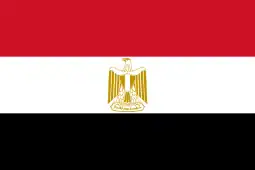 – Egypt has been reported to be supplying the rebels with mostly small arms such as assault rifles and ammunition.[55]
– Egypt has been reported to be supplying the rebels with mostly small arms such as assault rifles and ammunition.[55] – France has acknowledged having sent arms to rebels in the Nafusa Mountains. These are rocket launcher, MILAN anti-tank missiles and guns and ammunition that have been sent.[56][57][58]
– France has acknowledged having sent arms to rebels in the Nafusa Mountains. These are rocket launcher, MILAN anti-tank missiles and guns and ammunition that have been sent.[56][57][58]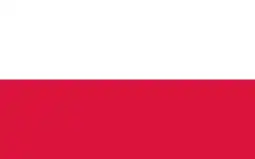 – The Polish Press Agency reported that unofficially the Polish government supplied the rebels with anti-tank rocket launchers and military vehicles and officers of Polish Special Forces in direct operations.[59][60]
– The Polish Press Agency reported that unofficially the Polish government supplied the rebels with anti-tank rocket launchers and military vehicles and officers of Polish Special Forces in direct operations.[59][60] – Qatar has been reported to be supplying the rebels with various kinds of weapons including MILAN anti-tank systems and AK-47 rifles (as many as 400 such rifles have been estimated to have reached the rebels). Qatar has also supplied the rebels with camouflage and armored vests.[21][61]
– Qatar has been reported to be supplying the rebels with various kinds of weapons including MILAN anti-tank systems and AK-47 rifles (as many as 400 such rifles have been estimated to have reached the rebels). Qatar has also supplied the rebels with camouflage and armored vests.[21][61] – Sudan supplied fighters in the Nafusa Mountains, Misrata, Kufra, and Benghazi with supplies, ammunition, and weapons such as FN-FAL and AK-47 assault rifles.[62][63]
– Sudan supplied fighters in the Nafusa Mountains, Misrata, Kufra, and Benghazi with supplies, ammunition, and weapons such as FN-FAL and AK-47 assault rifles.[62][63]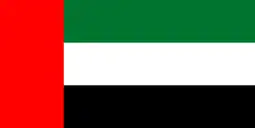 – The United Arab Emirates had been reported to be supplying the rebels with Belgian FN-FAL rifles[58] and telecommunication network.[64]
– The United Arab Emirates had been reported to be supplying the rebels with Belgian FN-FAL rifles[58] and telecommunication network.[64]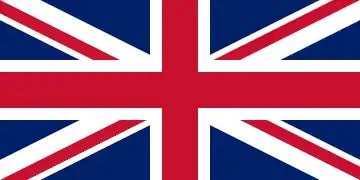 – The United Kingdom supplied the rebel force with communication equipment and body armor in order to get the force more organised and define a central command structure.
– The United Kingdom supplied the rebel force with communication equipment and body armor in order to get the force more organised and define a central command structure. – The United States is moving to provide Libyan rebels with $25 million in medical supplies, radios and other aid that would not include weapons as stated by the Secretary of State Hillary Clinton.[65]
– The United States is moving to provide Libyan rebels with $25 million in medical supplies, radios and other aid that would not include weapons as stated by the Secretary of State Hillary Clinton.[65]
Equipment

The equipment of the National Liberation Army came primarily from abandoned Army depots, Libyan military defectors (notably in eastern Libya, Benghazi, Bayda, and Ajdabiya),[66] Egyptian Armed Forces, France, Qatar and the United States.[67][68] It is not exactly known what equipment was in use at the end of the war but reports from journalists reveal the following were in use (limited in some cases as in tank and armor because of unavailability of spare parts[69]).
Camouflage
Camouflage clothing was provided by Qatar. Rebels were also seen in Ajdabiya wearing the military fatigues.[21]
Pistols
Shotguns
Submachine guns
Carbines and rifles
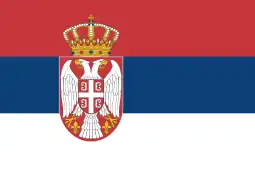 Zastava M93 Black Arrow anti-materiel rifle[71]
Zastava M93 Black Arrow anti-materiel rifle[71] Zastava M21 17.000 assault rifle[72]
Zastava M21 17.000 assault rifle[72]_crowned.svg.png.webp) Carcano bolt-action rifle
Carcano bolt-action rifle Heckler & Koch G36 assault rifle
Heckler & Koch G36 assault rifle Lee–Enfield bolt-action rifle
Lee–Enfield bolt-action rifle.svg.png.webp) Kar 98k bolt-action rifle
Kar 98k bolt-action rifle AK-47 assault rifle (Other variants including AKM, Zastava M70, AK-63, AK-74, AK-103, Chinese Type 56, Romanian AIM and East German MPi assault rifles)
AK-47 assault rifle (Other variants including AKM, Zastava M70, AK-63, AK-74, AK-103, Chinese Type 56, Romanian AIM and East German MPi assault rifles) AKS-74U assault carbine
AKS-74U assault carbine.svg.png.webp) FN FAL battle rifle[73]
FN FAL battle rifle[73]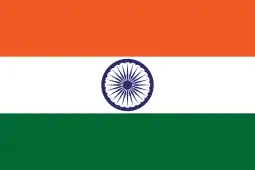 1B1 INSAS
1B1 INSAS M4 carbine
M4 carbine Norinco CQ assault rifle (a copy of the Colt M16 rifle)
Norinco CQ assault rifle (a copy of the Colt M16 rifle).svg.png.webp) FN FAL squad automatic weapon
FN FAL squad automatic weapon

Machine guns and autocannons
 Zastava M02 Coyote Heavy machine gun[75]
Zastava M02 Coyote Heavy machine gun[75] M84 Light machine gun[71]
M84 Light machine gun[71] DP-28 Light machine gun
DP-28 Light machine gun RPK Light machine gun
RPK Light machine gun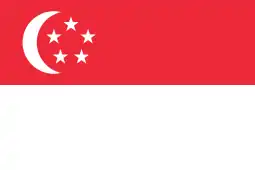 Ultimax 100 Light machine gun
Ultimax 100 Light machine gun Daewoo Precision Industries K3 Light machine gun
Daewoo Precision Industries K3 Light machine gun PKM General-purpose machine gun
PKM General-purpose machine gun PKT re-purposed as portable machine guns
PKT re-purposed as portable machine guns Rheinmetall MG 3 General-purpose machine gun
Rheinmetall MG 3 General-purpose machine gun.svg.png.webp) FN MAG General-purpose machine gun
FN MAG General-purpose machine gun M1919A4 and M1919A6 Browning[76]
M1919A4 and M1919A6 Browning[76] M2 and M3 .50 cal Heavy machine gun (Mainly mounted on Technicals)
M2 and M3 .50 cal Heavy machine gun (Mainly mounted on Technicals) DShK 12.7mm Heavy machine gun[77] (Mainly mounted on Technicals)
DShK 12.7mm Heavy machine gun[77] (Mainly mounted on Technicals) NSV 12.7mm Heavy machine gun taken off of T-72 tanks (Mainly mounted on Technicals)
NSV 12.7mm Heavy machine gun taken off of T-72 tanks (Mainly mounted on Technicals) KPV 14.5mm Heavy machine gun mounted on Technicals
KPV 14.5mm Heavy machine gun mounted on Technicals ZPU (ZPU-1,ZPU-2,ZPU-4) 14.5mm Anti-aircraft guns (Mainly mounted on Technicals but also on wheeled carriages)
ZPU (ZPU-1,ZPU-2,ZPU-4) 14.5mm Anti-aircraft guns (Mainly mounted on Technicals but also on wheeled carriages).svg.png.webp) Hispano-Suiza HS.820 20 mm naval anti-aircraft autocannon mounted on Technicals
Hispano-Suiza HS.820 20 mm naval anti-aircraft autocannon mounted on Technicals ZU-23-2 23 mm anti-aircraft autocannons mounted on Technicals
ZU-23-2 23 mm anti-aircraft autocannons mounted on Technicals Gryazev-Shipunov GSh-23L 23 mm twin-barreled autocannon taken off of pro-Gaddafi force planes and mounted on Technicals
Gryazev-Shipunov GSh-23L 23 mm twin-barreled autocannon taken off of pro-Gaddafi force planes and mounted on Technicals Gryazev-Shipunov GSh-30-1 30x165mm autocannon taken off of pro-Gaddafi force planes
Gryazev-Shipunov GSh-30-1 30x165mm autocannon taken off of pro-Gaddafi force planes.svg.png.webp) Romanian M-1980/1988 30mm autocannon mounted on Technicals
Romanian M-1980/1988 30mm autocannon mounted on Technicals AZP S-60 57 mm autocannon
AZP S-60 57 mm autocannon
Sniper rifles
 OSV-96 Imported
OSV-96 Imported Dragunov SVD
Dragunov SVD.svg.png.webp) PSL (rifle)
PSL (rifle)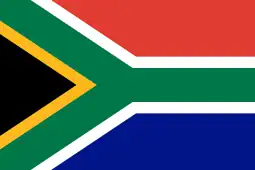 Truvelo 14.5x114mm and 20mm sniper rifles captured from the pro-Gaddafi forces
Truvelo 14.5x114mm and 20mm sniper rifles captured from the pro-Gaddafi forces
Rocket propelled, missiles and grenade systems
 M79 Osa shoulder-launched, anti-tank rocket-propelled grenade
M79 Osa shoulder-launched, anti-tank rocket-propelled grenade RPG-7 shoulder-launched, anti-tank rocket-propelled grenade launcher
RPG-7 shoulder-launched, anti-tank rocket-propelled grenade launcher RPG-26
RPG-26.svg.png.webp) RB M57 Yugoslavian shoulder-launched, anti-tank rocket-propelled grenade launcher
RB M57 Yugoslavian shoulder-launched, anti-tank rocket-propelled grenade launcher SA-7 9K32 "Strela-2" MANPADS[78]
SA-7 9K32 "Strela-2" MANPADS[78] 9K11 Malyutka (Sagger) anti-tank missiles
9K11 Malyutka (Sagger) anti-tank missiles MILAN anti-tank missiles[79]
MILAN anti-tank missiles[79] 9M123 Khrizantema supersonic anti-tank missiles
9M123 Khrizantema supersonic anti-tank missiles Carl Gustav recoilless rifle[80]
Carl Gustav recoilless rifle[80] SPG-9[81]
SPG-9[81] B-10 recoilless rifle
B-10 recoilless rifle M40 recoilless rifle mounted on jeeps and pickups with roof and windshield cut off[82]
M40 recoilless rifle mounted on jeeps and pickups with roof and windshield cut off[82] Type 63 multiple rocket launcher (Mainly mounted on Technicals)
Type 63 multiple rocket launcher (Mainly mounted on Technicals) 122 mm multiple rocket launcher salvaged from damaged BM-21 Grad then divided into 3 to 8 tubes and mounted on Technicals
122 mm multiple rocket launcher salvaged from damaged BM-21 Grad then divided into 3 to 8 tubes and mounted on Technicals S-5 rocket UB-16-57UMP, UB-32 rocket launchers
S-5 rocket UB-16-57UMP, UB-32 rocket launchers Katyusha rocket launcher mounted on Technicals[83][84]
Katyusha rocket launcher mounted on Technicals[83][84] AGS-17 automatic grenade launcher
AGS-17 automatic grenade launcher F1 hand grenade
F1 hand grenade RGD-5
RGD-5 AN M18 Smoke grenade
AN M18 Smoke grenade M2 mortar
M2 mortar M1938 mortar
M1938 mortar 122 mm howitzer 2A18 (D-30)
122 mm howitzer 2A18 (D-30) 130 mm towed field gun M1954 (M-46)
130 mm towed field gun M1954 (M-46) 155 mm towed field gun M114 howitzer[85]
155 mm towed field gun M114 howitzer[85]
Vehicles
 T-34 - At least one seized during the war and placed at the main square in Garyan, according to Reuters. Current status unknown.[86]
T-34 - At least one seized during the war and placed at the main square in Garyan, according to Reuters. Current status unknown.[86] T-55 main battle tank[77][87]
T-55 main battle tank[77][87] T-62 main battle tank[88]
T-62 main battle tank[88] T-72 main battle tank
T-72 main battle tank Type 59 main battle tank
Type 59 main battle tank Centurion AVRE 105mm main battle tank, supplied by Jordan
Centurion AVRE 105mm main battle tank, supplied by Jordan 2S1 Gvozdika 122mm self-propelled artillery
2S1 Gvozdika 122mm self-propelled artillery Palmaria 155mm self-propelled artillery
Palmaria 155mm self-propelled artillery BMP-1 Infantry fighting vehicle[77]
BMP-1 Infantry fighting vehicle[77] BMP-2 Infantry fighting vehicle
BMP-2 Infantry fighting vehicle BMP-3 Infantry fighting vehicle - 10 delivered from pre-revolution order.[89]
BMP-3 Infantry fighting vehicle - 10 delivered from pre-revolution order.[89] 9P157-2 "Khrizantema-S" BMP-3 Anti-tank version with supersonic 9M123 Khrizantema (AT-15) system with radar and laser guidance - 14 in service; 4 pre-revolution, 10 delivered in October 2013.[90]
9P157-2 "Khrizantema-S" BMP-3 Anti-tank version with supersonic 9M123 Khrizantema (AT-15) system with radar and laser guidance - 14 in service; 4 pre-revolution, 10 delivered in October 2013.[90] MT-LBu Armored personnel carrier
MT-LBu Armored personnel carrier BTR-60 Armored personnel carrier converted to MRLS for Type 63 multiple rocket launcher
BTR-60 Armored personnel carrier converted to MRLS for Type 63 multiple rocket launcher M113 Armored personnel carrier with ZU-23-2 23mm anti-aircraft autocannons mounted on top
M113 Armored personnel carrier with ZU-23-2 23mm anti-aircraft autocannons mounted on top M577 command vehicle converted to Infantry fighting vehicle with 2A28 Grom turret from BMP-1 mounted on top
M577 command vehicle converted to Infantry fighting vehicle with 2A28 Grom turret from BMP-1 mounted on top Ratel 20 Infantry fighting vehicles with improvised ZPU-1 Anti-aircraft gun mounted on top, supplied by Qatar[91]
Ratel 20 Infantry fighting vehicles with improvised ZPU-1 Anti-aircraft gun mounted on top, supplied by Qatar[91]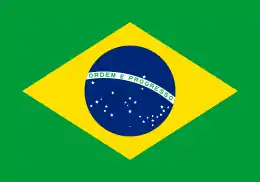 EE-9 Cascavel Armored car - Captured or salvaged by the Zawiya Martyrs Brigade in Sirte
EE-9 Cascavel Armored car - Captured or salvaged by the Zawiya Martyrs Brigade in Sirte Nimr Armored car
Nimr Armored car Humvee - 200 donated by the U.S. Army in July 2013.[92]
Humvee - 200 donated by the U.S. Army in July 2013.[92] SA-6 Gainful
SA-6 Gainful SA-8 Gecko
SA-8 Gecko RM-70 multiple rocket launcher
RM-70 multiple rocket launcher BM-21 Grad Multiple rocket launcher trucks[93]
BM-21 Grad Multiple rocket launcher trucks[93] AT-T
AT-T S-125 Neva/Pechora
S-125 Neva/Pechora- Technicals (Armed with DShK, M2, M3, NSV, KPV, ZPU, ZU-23-2, GSh-23L, HS.820, 2A28 Grom with or without the turret taken off the BMP-1)
Aircraft
 MiG-21 Fighter jet aircraft – One MiG-21UM crashed after take-off from Benina airport due to technical malfunction.
MiG-21 Fighter jet aircraft – One MiG-21UM crashed after take-off from Benina airport due to technical malfunction. MiG-23 Fighter jet aircraft – one shot down by friendly fire over Benghazi.
MiG-23 Fighter jet aircraft – one shot down by friendly fire over Benghazi..svg.png.webp) Soko G-2 Ground-attack and reconnaissance
Soko G-2 Ground-attack and reconnaissance Mil Mi-2 light armoured utility helicopter
Mil Mi-2 light armoured utility helicopter Mil Mi-14 Anti Submarine Helicopter[94]
Mil Mi-14 Anti Submarine Helicopter[94] Mil Mi-24[95] Attack helicopter/Transport helicopter
Mil Mi-24[95] Attack helicopter/Transport helicopter
Note: Both the Soko G-2, and Mil Mi-2 were captured at Misrata Airport on 24 February 2011.
Unmanned aerial vehicles (UAVs)
.svg.png.webp) 1 Aeryon Scout Micro UAV[96][97]
1 Aeryon Scout Micro UAV[96][97]
Ships
 1 Koni class frigate[98]
1 Koni class frigate[98]
- 212 Al-Hani[99]
 1 Nanuchka class corvette
1 Nanuchka class corvette
- 416 Tariq Ibn Ziyaad
 2 Natya class minesweeper
2 Natya class minesweeper
See also
References
- ↑ The Free Libya Armed Forces, ntclibya.com. Accessed 22 July 2011
- ↑ "Libyan Rebel Commander Is From Fairfax, Virginia". ABC News. Retrieved 25 November 2023.
- ↑ Grinin, Leonid; Korotayev, Andrey; Tausch, Arno (26 September 2018). Islamism, Arab Spring, and the Future of Democracy: World System and World Values Perspectives. Springer. p. 198. ISBN 978-3-319-91077-2.
- ↑ "Libya rebel army says training before Tripoli push". Reuters. 28 February 2011. Archived from the original on 3 March 2011.
- ↑ Nancy A. Youssef (28 February 2011). "Libyan rebels admit their military is lacking". Miami Herald.
- ↑ David D. Kirkpatrick and Karim Faheem (28 February 2011). "Libya rebels gain arms, defectors". Boston Globe.
- ↑ Dixon, Jeffrey S.; Sarkees, Meredith Reid (22 October 2015). A Guide to Intra-state Wars. SAGE. p. 414. ISBN 978-0-87289-775-5.
- ↑ "Libyan rebels rename themselves National Liberation Army". The Times of India. Times of India. 31 May 2011. Retrieved 1 June 2011.
- ↑ "Libya: New Chief for Revamped National Army". AllAfrica.com. 17 November 2011. Retrieved 5 February 2013.
- ↑ https://www.nytimes.com/2011/11/22/world/africa/libyas-toughest-test-may-be-building-an-army.html%7C date = 11/21/11| New York Times| date = Libyas toughest test may be building an army
- ↑ "Libya says to integrate 50,000 anti kadhafi fighters". Morocco World News. 1 December 2011. Retrieved 20 May 2020.
- ↑ "Turkey to Train Libya's Army, 21 December 2011". Archived from the original on 12 December 2013. Retrieved 7 December 2013.
- ↑ "Turkey to Train Libya's Army « Shabab Libya". Archived from the original on 29 November 2014. Retrieved 21 November 2014.
- ↑ "Former Libyan rebels offered military jobs". The Daily Telegraph. London. 26 December 2011.
- ↑ "Libya army chief of staff wants to disarm fighters". Zeenews. 5 January 2012. Retrieved 5 January 2012.
- ↑ "The Cutting Edge News". www.thecuttingedgenews.com. Retrieved 17 February 2023.
- ↑ Libya Rebel Recruits Head for Training as Insurgents Build Army by Ola Galal, Bloomberg Businessweek, 6 March 2011. Libyan rebel volunteers pour in by David Zucchino, Los Angeles Times, 3 March 2011.
- ↑ "Witnesses: Libya airstrike hits family in car". NBC News. Retrieved 17 February 2023.
- ↑ Kirkpatrick, David D. (25 June 2011). "Rebels in Western Libya Loosen Qaddafi's Grip". The New York Times.
- ↑ "Gaddafi forces recapture Ras Lanuf – Africa". Al Jazeera English. Retrieved 11 November 2011.
- 1 2 3 4 Evan Hill. "Libyan rebels get organised – Features". Al Jazeera English. Retrieved 11 November 2011.
- ↑ ROOT TECHNOLOGIES – Hossam El-Kady (6 September 2011). "Pro-Gaddafi tribe disarmed near Sirte – The Egyptian Gazette". 213.158.162.45. Archived from the original on 27 March 2012. Retrieved 11 November 2011.
- ↑ "Libya rebels say Younis killers were 'Islamist element' | World news". The Guardian. UK. 30 July 2011. Retrieved 11 November 2011.
- ↑ Gamal, Rania El (4 August 2011). "Analysis: Too many cooks spoil Libya's rebel front". Reuters. Retrieved 11 November 2011.
- ↑ Gamal, Rania El (8 October 2011). "American fighter makes Libya's war his own | Reuters". In.reuters.com. Retrieved 11 November 2011.
- 1 2 The rebels handed over their weapons in Bayda(in Arabic). Binrabah ، 24 October 2011.
- ↑ F_284 (24 October 2011). "تقرير إخباري: استقبال شعبي حافل في بنغازي للثوار المشاركين في تحرير سرت ووصول عدد من القادة لحضور إعلان التحرير". People's Daily. Retrieved 11 November 2011.
{{cite web}}: CS1 maint: numeric names: authors list (link) - ↑ Nordland, Rod; Shane, Scott (24 April 2011). "Guantánamo Files: Libyan Detainee Now U.S. Ally of Sorts". The New York Times.
- ↑ "Expat Pair Among Libyan Rebels Fighting For Zawiya |". Feb17.info. 13 July 2011. Archived from the original on 16 August 2011. Retrieved 11 November 2011.
- ↑ Stephen, Chris (20 July 2011). "Libyan rebels push towards Zlitan". The Guardian. London.
- ↑ Hopkins, Nick; Stephen, Chris (7 June 2011). "Libya rebels frustrated by Nato's safety-first strategy". The Guardian. London.
- ↑ Logan, Joseph (8 October 2011). "Libyan city takes siege mentality to national stage". Reuters. Retrieved 11 November 2011.
- 1 2 Published on Fri 3 June 16:10:02 BST 2011. "Libya: Rebel brigade carry memory of leader's dead brother to frontline - News". Thescotsman.scotsman.com. Retrieved 11 November 2011.
{{cite web}}: CS1 maint: numeric names: authors list (link) - ↑ "Ethnic cleansing, genocide and the Tawergha « Human rights investigations". Humanrightsinvestigations.org. 26 September 2011. Retrieved 11 November 2011.
- ↑ "Rebels Forage for Munitions Ahead of Final Assault on Qaddafi Birthplace- Bloomberg". Mobile.bloomberg.com. 31 August 2011. Retrieved 11 November 2011.
- ↑ "Misrata rebel forces seize arms after routing pro-Gaddafi troops |". Feb17.info. 31 July 2011. Archived from the original on 23 January 2013. Retrieved 11 November 2011.
- ↑ "Irish Libyans join rebels trying to oust Gadafy – The Irish Times – Sat, August 13, 2011". The Irish Times. 13 August 2011. Retrieved 11 November 2011.
- ↑ "Libyan rebels crack down on rogue militias « Shabab Libya". Shabablibya.org. 1 August 2011. Archived from the original on 8 February 2012. Retrieved 11 November 2011.
- ↑ "With the Sabratha Brigade in Libya". The Weekly Standard. 8 August 2011. Retrieved 11 November 2011.
- ↑ "The Fight for Sabratha". The Weekly Standard. 16 August 2011. Retrieved 11 November 2011.
- 1 2 "NATO strikes kill ten freedom fighters following the liberation of Badr « Shabab Libya". Shabablibya.org. Archived from the original on 3 April 2012. Retrieved 11 November 2011.
- ↑ "Photo from Getty Images". Daylife.com. 6 October 2011. Archived from the original on 8 December 2011. Retrieved 11 November 2011.
- ↑ "Libyan rebels say they have Gadhafi surrounded". CNN. 7 September 2011. Archived from the original on 21 November 2011. Retrieved 11 November 2011.
- ↑ "Libya's NTC claims control of Sabha". 21 September 2011. Retrieved 21 September 2011.
- ↑ "Libya's NTC captures three southern towns". 22 September 2011. Retrieved 22 September 2011.
- ↑ https://www.bbc.co.uk/news/world-middle-east-15804299%7Cdate = 19 November 2011| access-date = 19 November 2011 | agency = BBC news
- ↑ 5 Minutes 10 Minutes (3 October 2011). "Rule of law by militia as horrors are revealed". The Australian. Retrieved 11 November 2011.
{{cite news}}: CS1 maint: numeric names: authors list (link) - ↑ Fadel Lamen (22 August 2011). "Libya News: Inside the Rebels' Secret Endgame". The Daily Beast. Retrieved 11 November 2011.
- ↑ "Once allies against Gadhafi, now fight in new Libya". CNN. 5 October 2011. Retrieved 11 November 2011.
- ↑ Farmer, Ben (12 October 2011). "Libya: Col Gaddafi's son Mutassim 'captured trying to flee Sirte'". Telegraph. London. Retrieved 11 November 2011.
- ↑ "Libya's Gadhafi captured, killed | Newswatch | a Chron.com blog". Blog.chron.com. 20 October 2011. Retrieved 11 November 2011.
- ↑ McElroy, Damien (22 October 2011). "No post-mortem for Gaddafi as debate over burial continues". Telegraph. London. Retrieved 11 November 2011.
- ↑ Walker, Portia; Randall, David (20 November 2011). "Taken alive, Saif al-Islam Gaddafi escapes his father's fate". The Independent. London. Archived from the original on 18 June 2022.
- ↑ Spencer, Richard (20 November 2011). "Libya: conflict brewing over trial of Saif al-Islam Gaddafi". The Daily Telegraph. London.
- ↑ Levinson, Charles (17 March 2011). "Egypt Said to Arm Libya Rebels". The Wall Street Journal.
- ↑ Par Europe1.fr avec François Clémenceau (29 June 2011). "Libye : la France a armé les rebelles – Europe1.fr – International". Europe1.fr. Retrieved 11 November 2011.
{{cite web}}: CS1 maint: numeric names: authors list (link) - ↑ "Libye: La France a parachuté des armes légčres aux rebelles libyens". 20 Minutes (in French). 30 June 2011. Retrieved 11 November 2011.
- 1 2 Jolly, David; Fahim, Kareem (29 June 2011). "France Admits Arming Libyan Rebels". The New York Times.
- ↑ Staff (22 August 2011). "Poland Supplied Arms to Libyan Rebels?". Polish Radio External Service. Archived from the original on 6 April 2012. Retrieved 25 August 2011.
- ↑ Adamowski, Jaroslaw (22 August 2011). "Poland Sold Arms to Libyan Rebels". Defense News. Archived from the original on 28 July 2012. Retrieved 25 August 2011.
- ↑ Chivers, C. J. (20 April 2011). "Inferior Arms Hobble Rebels in Libya War". The New York Times.
- ↑ "Wed, 26 Oct 2011, 18:19 GMT+3 – Libya". Al Jazeera Blogs. Retrieved 26 October 2011.
- ↑ "Sudan's Bashir offers help to Libya during criticised visit". BBC News. 7 January 2012.
- ↑ Carol Huang (21 July 2011). "Dubai telecoms engineers supply Libyan rebels with mobile phone network". The National. Retrieved 27 October 2011.
- ↑ "Clinton recommends $25 million U.S. aid to Libyan rebels". Reuters. 20 April 2011.
- ↑ The Strategic Geography of the Libyan Civil War The Cutting Edge News 7 March 2011
- ↑ Chivers, C. J. (20 April 2011). "Inferior Arms Hobble Rebels in Libya War". The New York Times.
- ↑ Levinson, Charles (17 March 2011). "Egypt Said to Arm Libya Rebels". The Wall Street Journal.
- ↑ "Coalition of the Ambivalent". The Wall Street Journal. 22 April 2011.
- 1 2 "An American Freedom Fighter in the Libyan Civil War: Part 3". SOFREP. Retrieved 21 November 2014.
- 1 2 "Dnevni list Danas - Biznis - Posao decenije vredan 100 miliona dolara". 27 April 2014. Retrieved 21 November 2014.
- ↑ 100 million dollar weapons deal http://www.danas.rs/dodaci/biznis/posao_decenije_vredan_100_miliona_dolara.27.html?news_id=280556
- ↑ "Up Close With Mustafa Abud Al-Jeleil, Leader of Libyan Rebels". World Crunch.com.com. Archived from the original on 3 April 2011. Retrieved 12 March 2011.
- ↑ Libya will buy 20,000 G3 7.62mm assault rifle from Turkey to strengthen its national army - Armyrecognition.com, 22 September 2013 Archived 26 September 2013 at the Wayback Machine
- ↑ "Machine Gun M02 Coyote - 12.7x108 mm /.50 Browning". Archived from the original on 30 December 2014. Retrieved 21 November 2014.
- ↑ "M1919A4/M1919A6". Archived from the original (JPG) on 21 October 2012. Retrieved 9 June 2013.
- 1 2 3 Jonathan Marcus (10 March 2011). "Gaddafi loyalists mount onslaught". BBC. Retrieved 11 March 2011.
- ↑ "U.K. diplomatic team leaves Libya". CBC News. 6 March 2011.
- ↑ "Gadhafi asks Obama to end NATO bombing". CNN. 11 May 2011.
- ↑ "Archived copy". Archived from the original on 12 October 2017. Retrieved 9 June 2013.
{{cite web}}: CS1 maint: archived copy as title (link) - ↑ "Rebels Libyan attacks Bab Al Azizyia compound in Tripoli. - ETIENNE DE MALGLAIVE". Retrieved 21 November 2014.
- ↑ "M40 recoilless rifle mounted on jeeps and pickups with roof and windshield cut off". Archived from the original (JPG) on 24 July 2011. Retrieved 28 May 2011.
- ↑ John Moore. "Libyan rebels carry a Katyusha rocket to fire on government forces as... News Photo 109981268". Getty Images. Retrieved 21 November 2014.
- ↑ "Libyan rebels receive foreign training". Retrieved 21 November 2014.
- ↑ Chris Stephen (31 July 2011). "Misrata Rebels Seize Gaddafi Arms". The Guardian. UK. Retrieved 11 November 2011.
- ↑ "Libya rebels make gains towards Tripoli". Channel 4 News. 18 August 2011.
- ↑ "Libya: Rebels fight street battles in Zawiya". BBC News. 19 August 2011. Retrieved 20 August 2011.
- ↑ "Libyan Interim Forces Await Decision to Attack". English.alarabiya.net. 5 September 2011. Retrieved 11 November 2011.
- ↑ Libyan army takes delivery of 10 Russian-made BMP-3 armoured infantry fighting vehicles - Armyrecognition.com, 26 September 2013
- ↑ Libya; Army incepts Russian tank destroyers Archived 29 November 2014 at the Wayback Machine - Dmilt.com, 7 October 2013
- ↑ "SA Ratels in Libya spur DA to call for investigation". Business Day Live. Retrieved 5 November 2014.
- ↑ Libyan army has taken delivery of 200 HMMWV Humvees from United States - Armyrecognition.com, 30 July 2013
- ↑ "Libya uprising: The battle on the road to Sirte". BBC News. 25 August 2011. Retrieved 26 August 2011.
- ↑ "Libya unrest: Benghazi revels in freedom from Gaddafi". BBC News. 26 February 2011.
- ↑ Images on the website of the Libyan National Transitional Council Archived 12 March 2011 at the Wayback Machine
- ↑ Aeryon Scout Micro UAV Helps Libyan Rebels in March to Tripoli
- ↑ "CBC News: Canadian robot spy flies for Libyan rebels". 24 August 2011. Retrieved 21 November 2014.
- ↑ Botti, David (25 February 2011). "Libya's Defectors". The New York Times. Archived from the original on 28 February 2011. Retrieved 15 March 2011.
- ↑ "Media _DSC0117 – The Libyan Interim National Council". Ntclibya.org. 7 March 2011. Archived from the original on 6 November 2011. Retrieved 11 November 2011.
